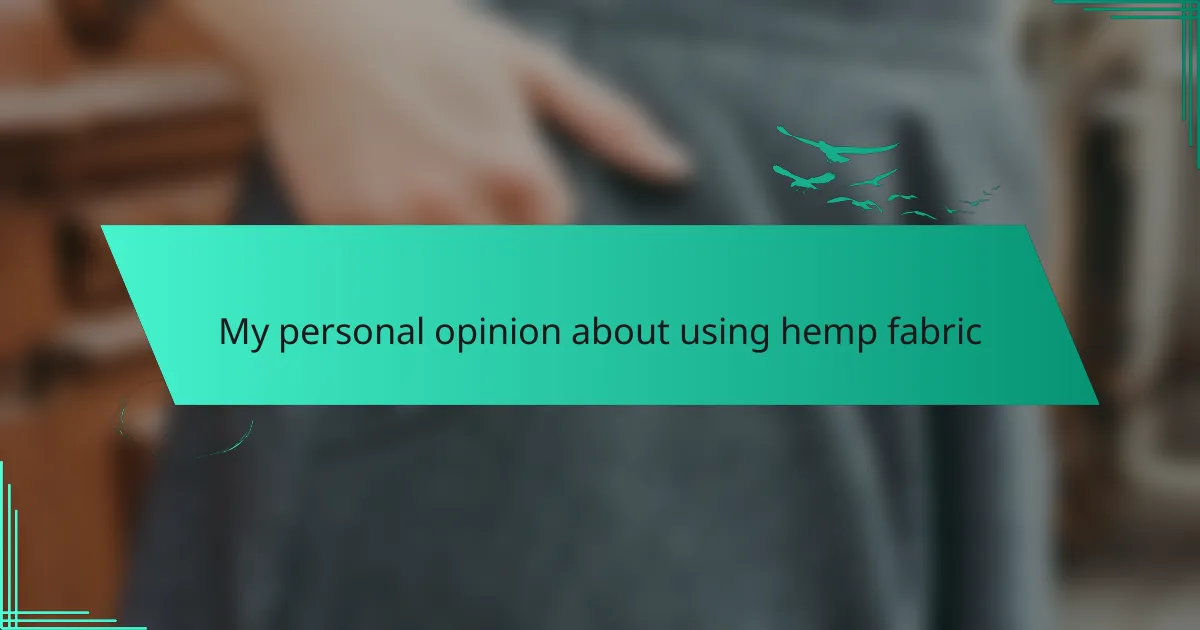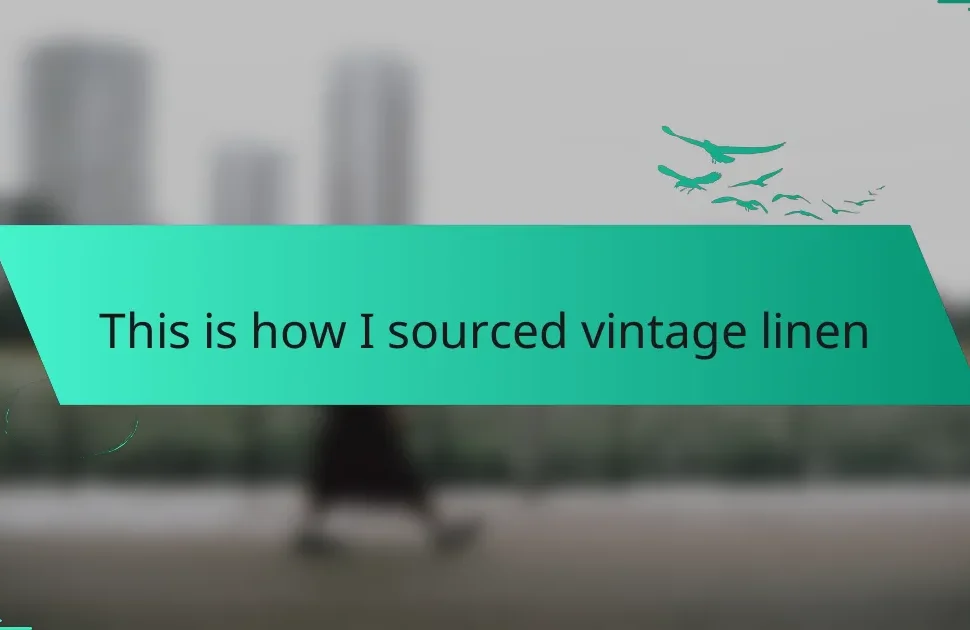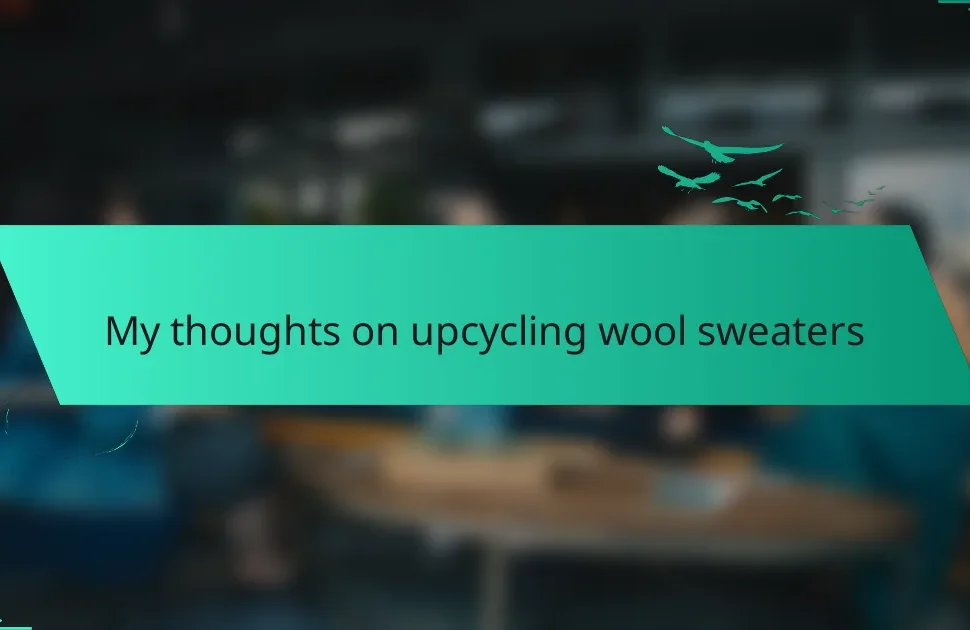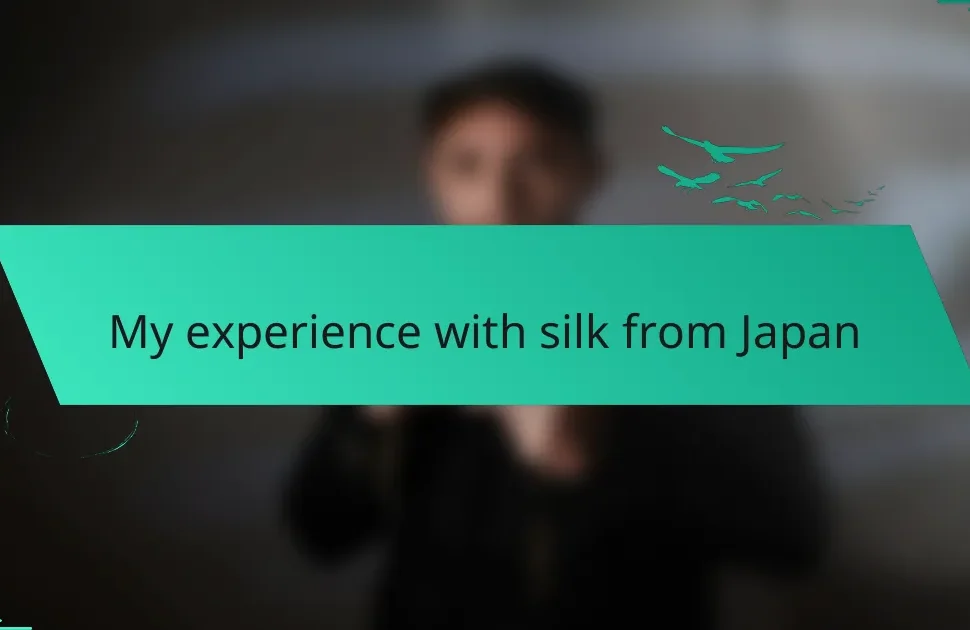Key takeaways
- Hemp fabric is eco-friendly, requiring less water and no pesticides, making it a sustainable choice compared to cotton.
- Its durability and breathability make hemp suitable for various fashion projects, including vintage styles and DIY creations.
- Working with hemp may require pre-washing and using sharp needles to ensure ease of handling and clean stitching.
- Hemp fabric ages beautifully, supporting sustainable practices and offering a unique aesthetic in fashion.
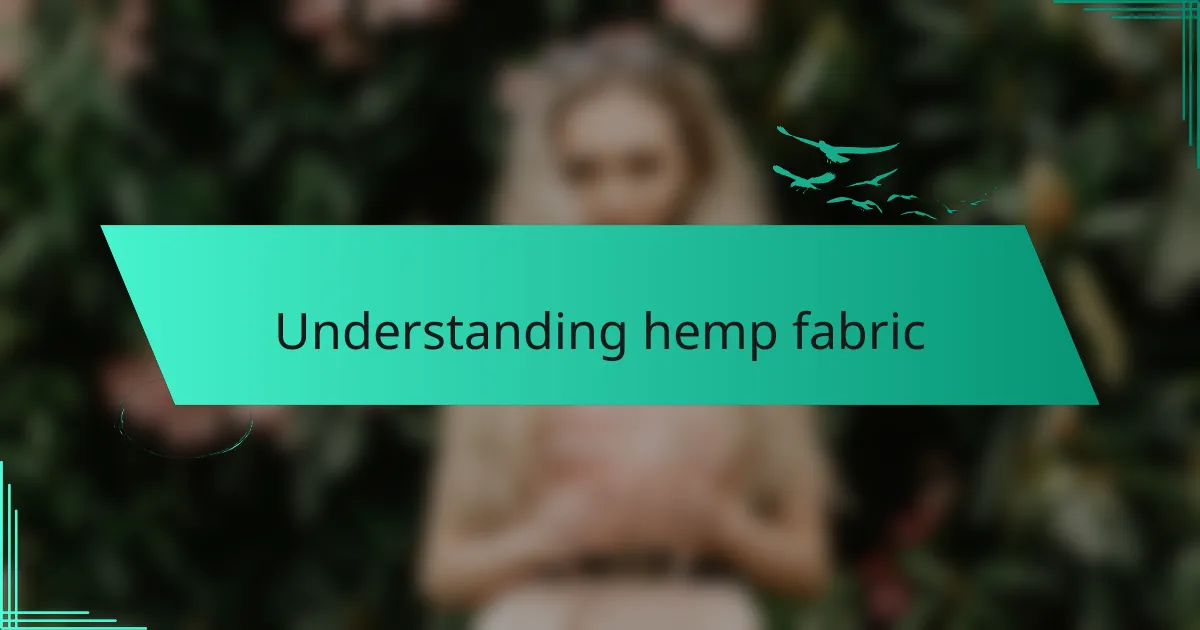
Understanding hemp fabric
When I first encountered hemp fabric, I was struck by its natural texture and durability. It’s not just a trendy material; hemp has been used for thousands of years due to its sustainability and strength. I find it fascinating that hemp requires less water and no pesticides compared to cotton, making it an eco-friendly alternative for vintage fashion enthusiasts.
One of the standout features of hemp fabric is its breathability. I remember wearing a hemp shirt during a warm summer day, and it kept me cool and comfortable while still looking stylish. There’s something life-affirming about choosing a fabric that aligns with both quality and environmental consciousness.
Here’s a quick comparison of hemp fabric and traditional cotton to highlight their unique qualities:
| Feature | Hemp Fabric | Cotton |
|---|---|---|
| Sustainability | Highly sustainable, requires little water and no pesticides | Less sustainable, often requires significant water and pesticides |
| Durability | Strong and long-lasting | Tends to wear out faster |
| Breathability | Excellent breathability, ideal for warm weather | Good breathability but can retain moisture |
| Softness | Initially rough, softens with washing | Soft from the start |
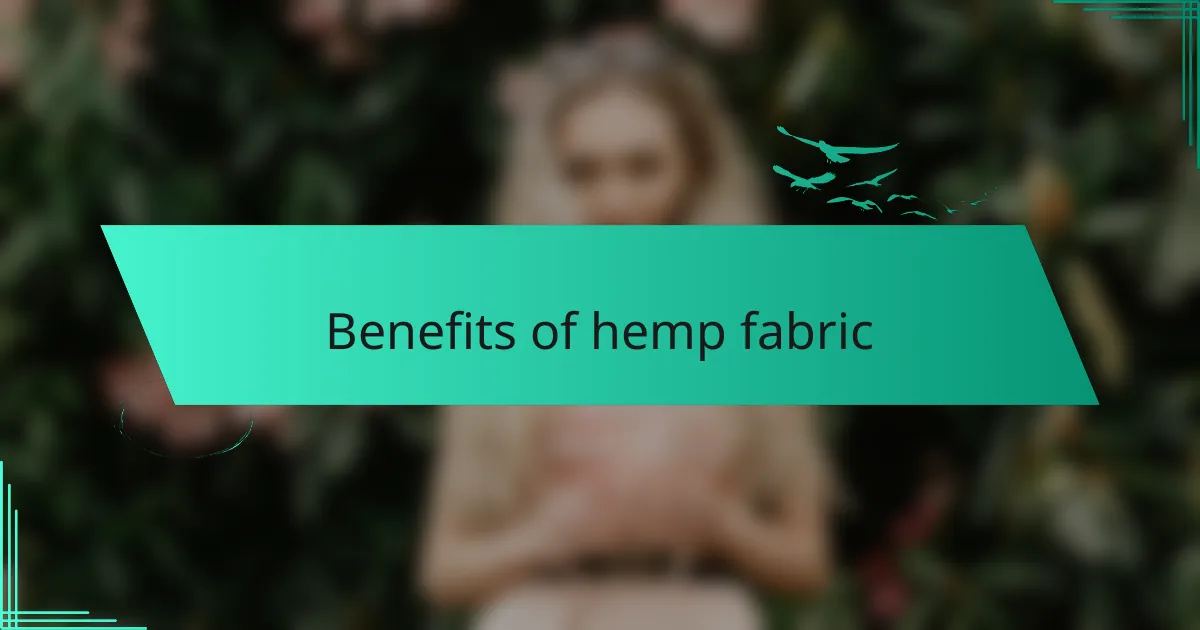
Benefits of hemp fabric
Hemp fabric truly shines in its durability, standing the test of time far better than many other materials. I recall crafting a vintage jacket from hemp, and after numerous washes, it only became softer and cozier while maintaining its strength. It’s almost like the fabric has a character of its own—gaining charm with each wear.
Moreover, the eco-friendly credentials of hemp fabric resonate deeply with me. Knowing that this material thrives without harmful pesticides makes me feel like I’m making a responsible choice. Have you ever considered how much our clothing choices impact the planet? Every time I choose hemp, I feel I’m contributing to a more sustainable future, one vintage piece at a time.
Another benefit worth mentioning is how versatile hemp is in fashion. I love experimenting with it in various DIY projects, feeling confident that it can adapt to different styles while still offering breathable comfort. Whether it’s a casual summer dress or a rugged pair of overalls, hemp fabric allows me to express myself creatively while being mindful of the environment. Isn’t it wonderful when a fabric can serve both fashion needs and eco-conscious values?
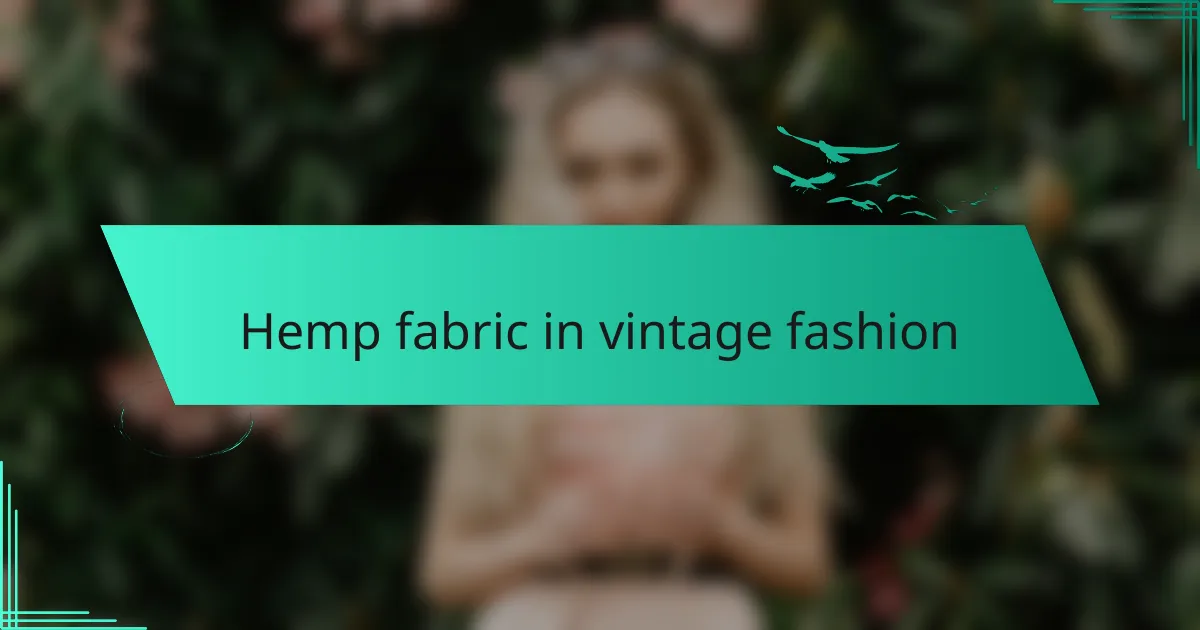
Hemp fabric in vintage fashion
Hemp fabric has an intriguing place in vintage fashion, often overlooked by modern trends. Personally, when I started exploring vintage styles, I discovered that hemp adds a unique texture and durability that cotton simply can’t match. I still remember the first hemp shirt I came across; the way it felt, almost like wearing a piece of history, made me appreciate the material’s timelessness.
In embracing hemp, vintage fashion enthusiasts can enjoy benefits that resonate with a sustainable lifestyle. Not only does it age beautifully, but it also resonates with values of eco-friendliness and rugged authenticity. Using hemp in DIY projects allows for creativity while supporting sustainable practices.
- Naturally resistant to mold and UV light
- Biodegradable and requires less water than cotton
- Stronger and more durable than most fabrics, making it perfect for vintage-inspired pieces
- Unique texture offers a rustic, timeless aesthetic
- Supports sustainable agriculture and ethical production methods
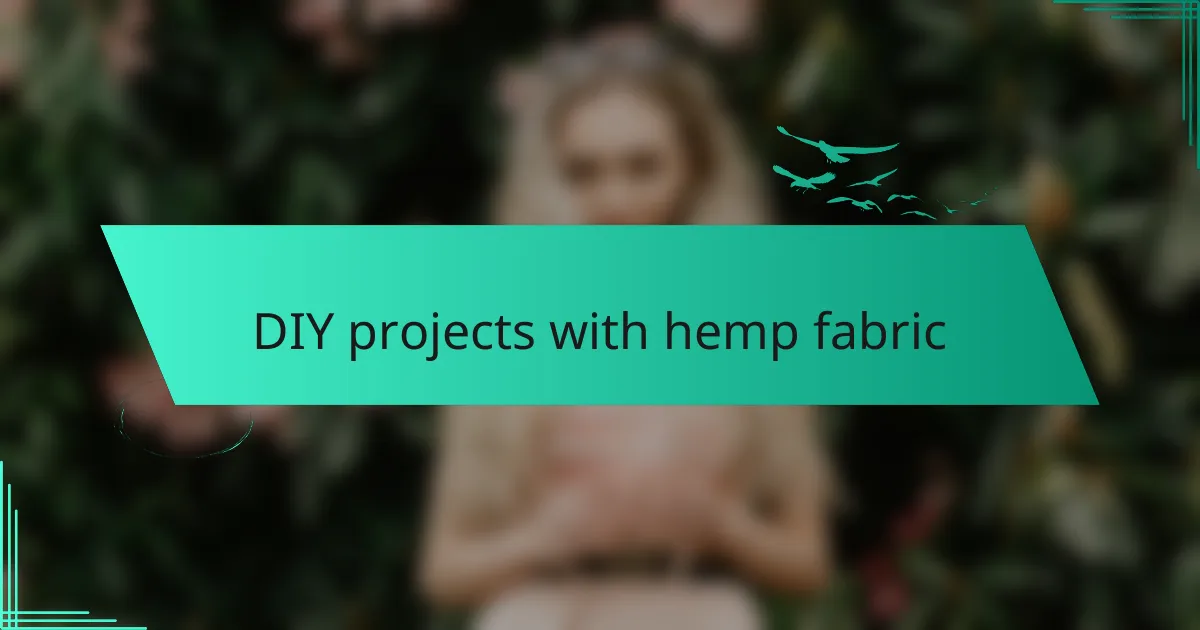
DIY projects with hemp fabric
Hemp fabric offers a wonderful canvas for various DIY projects, and I absolutely love working with it. The texture is unique, and the fabric has a rustic charm that really resonates with vintage aesthetics. I remember creating a vintage-style tote bag from hemp fabric; the durability surprised me, and it quickly became my go-to bag for errands.
When I think of DIY projects using hemp fabric, several ideas come to mind:
- Upcycled tote bags with vintage patterns
- Decorative pillow covers featuring unique stitching
- Reusable sandwich wraps for eco-friendly lunches
- Simple hemp fabric hair accessories, like headbands or scrunchies
- Vintage-style aprons combining functionality with flair
Embracing hemp in my projects not only nurtures my creativity but also aligns with sustainable practices—something that’s truly rewarding!
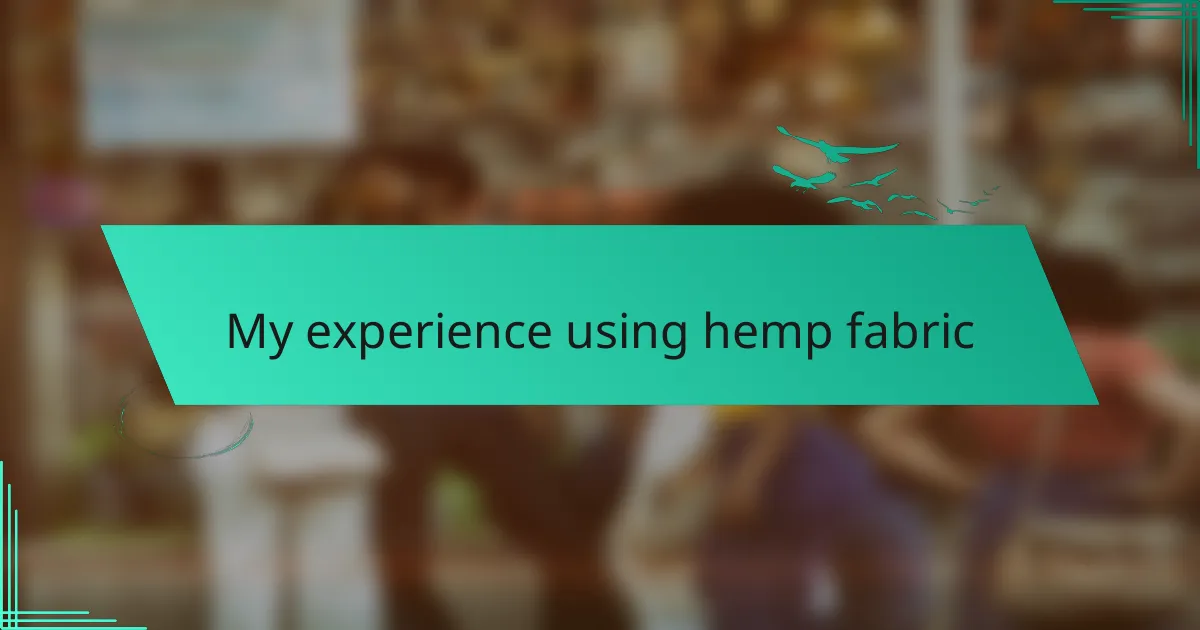
My experience using hemp fabric
When I first started sewing with hemp fabric, I was a bit unsure about how it would turn out. I still vividly remember making a simple hemp skirt that I felt both nervous and excited about. To my delight, the fabric not only held its shape beautifully but also became softer with each wash, an unexpected perk that added to my attachment to the piece.
One of my favorite experiences was crafting a hemp bandana for a summer festival. The breathable quality kept me comfortable under the sun, and I couldn’t help but feel a sense of pride wearing something I made that was also environmentally friendly. Isn’t it amazing how fashion can be both functional and a way to express our values?
Over time, I’ve learned that working with hemp fabric can present its challenges, like its initial roughness. But the rewards far outweigh the bumps. After adjusting to its texture, I found it easy to incorporate into more intricate designs, and now I can’t imagine my DIY projects without it. Have you ever discovered a material that caught you by surprise? That’s what hemp has been for me—a constant source of inspiration and joy in my creative journey.
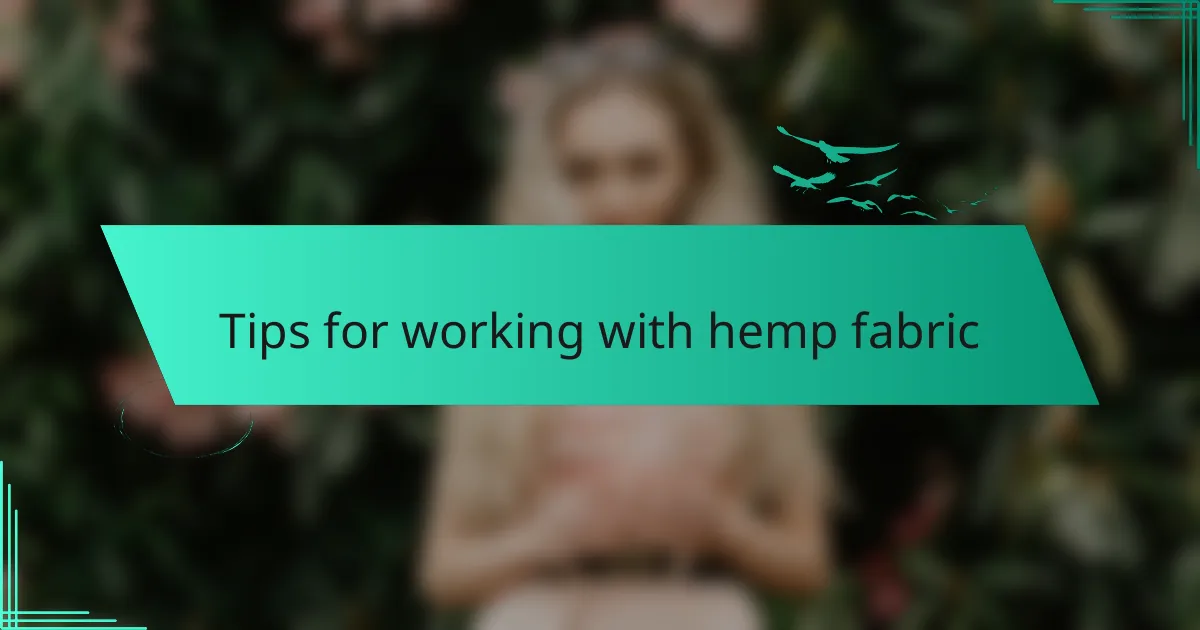
Tips for working with hemp fabric
When working with hemp fabric, I’ve found that pre-washing the fabric before any project can be a game-changer. This step not only helps to remove any residues but also allows the fabric to soften up, making it easier to handle. I remember the first time I skipped this step; the fabric was stiff, and my sewing machine struggled to glide through it smoothly.
Another tip is to use a sharp needle when sewing hemp. I learned this the hard way after a few frustrating sessions where the fabric snagged and bunched up. A universal needle or a size 90/14 works well; it makes a significant difference in achieving clean stitches.
Lastly, consider mixing hemp with other fibers for added versatility. I love blending it with cotton; the result is not only a sustainable choice but also brings a delightful texture and drape to my DIY projects. This way, I can enjoy the best of both worlds: the durability of hemp and the softness of cotton.
| Tip | Description |
|---|---|
| Pre-washing | Wash the fabric to remove residues and soften it for easier handling. |
| Using a sharp needle | A sharp needle prevents snagging and helps achieve clean stitches. |
| Mixing fabrics | Combining hemp with other fibers like cotton enhances texture and drape. |
